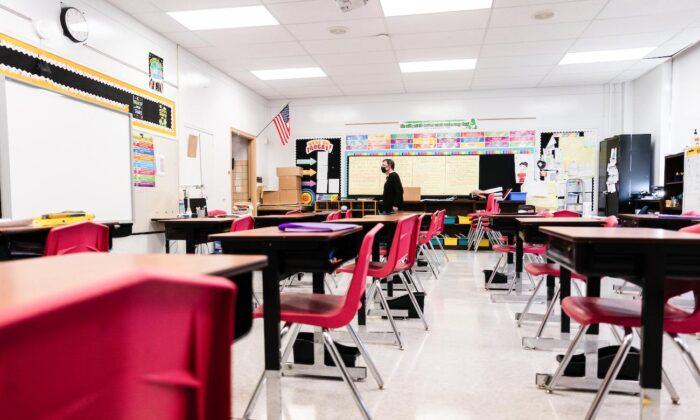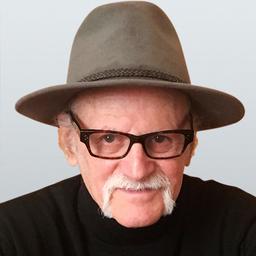In 2021, the New York Times reported that the San Francisco Board of Education had approved a plan to rename 44 of the city’s schools that were named after people such as Abraham Lincoln, George Washington, Paul Revere, and Robert Louis Stevenson, due to those historical figures’ connection with white supremacy and patriarchy.
The mayor, London Breed, commented: “What I cannot understand is why the School Board is advancing a plan to have all these schools renamed by April [2021], when there isn’t a plan to have our kids back in the classroom by then.”
More outrageous than the name scrubbing is the fact that the Board found time to start its revisionism while the city was in the process of suing the district for not coming up with a reopening plan that met state requirements.
They were preoccupied with alternative explanations of American history, with multiculturalism, with such goals as removing barriers to equal access (as if after 50 years of bussing and focused attention on matters of equality San Francisco’s diverse student body really experiences barriers), with such social engineering as mixing students from high and low social backgrounds rather than high and low economic backgrounds (which simply means letting high-performing students in poor neighborhoods enroll in any school they want), or with the politically correct goal of never offending a student’s sensibilities (having never read Piaget, one of the world’s great education theorists who said that wasn’t necessary, that children’s egos are so large, children so self-centered, that they recover from just about any scolding), or with the educationally incorrect goal of never giving low grades.
There is pressure on principals and teachers to never give parents a reason to complain, yet if they do, one never backs up the teacher but instead says things like, “We’re here for the students; teachers can be replaced but students, our customers, cannot. They have been leaving the district at a rate of 800 a year for the last 50 years.”
There were 92,653 students in 1970 according to SF Public Press, and 51,898 in 2020 according to the SF Examiner.
The consequence: Teachers lowered standards. The curriculum level in 2000 is exactly one half what it was in 1965.
Letter to the Board of Education
Articles about public education miss the following underlying truths:1. Public education may provide the ability to succeed in life, but that’s not the purpose of public education. We have publicly funded schools in this country for one reason: to teach reading, math, and history so that students, future citizens, will recognize threats to democracy. Thomas Jefferson created the nation’s first public schools because he feared that without an informed citizenry, our new democracy would not survive.
2. To deal with socially and educationally deprived students, systems of classroom management have become the dominant feature of public education today—except that once teachers realize that’s what they’re actually paid to do, they quit. Since 1970, nationwide, according to the California Commission on Teacher Credentialing and the National Center for Education Statistics (NCES), there have been periods when 50 percent of new teachers left the profession within three years and 75 percent within five. Those numbers are lower today, but still, in no other sphere do young people enter with such enthusiasm and preparation and then find their hopes so quickly and thoroughly dashed.
3. All learning is self-learning. Teachers facilitate and motivate learning, but it is students who must do the work.
School districts paying for small class sizes are wasting their money. The number of students in a class has nothing to do with the number of hours students study. Statistics do not show that students in small classes learn more than students in large classes. The real reason public schools have small classes is to prevent teachers from quitting.
All foundational learning occurs between the ages of 0 and 3. Children from socially deprived homes enter kindergarten with a 2,500-to-5,000-word deficit in their vocabularies, which increases through grade 12, according to the “Handbook of Language and Literary Development.” Since the 1970s, public schools, catering to the socially deprived, have driven away their best students and teachers.
4. To raise test scores (overnight), school districts need do only one thing: bring back their best students and teachers! Unapologetically bring back academic standards and a Eurocentric classical education. It’s time for America to reunite behind its common culture: 5th century Athens, 1st century Rome, 18th century Age of Enlightenment, the culture of British and American democracy, individual freedom—in sum, Western civilization.
This is important, because without common culture America will not be able to defend itself against domination by countries that do have a common culture—which is every other country in the world—China, for example.
It’s also important because America is unique among nations in being founded on a set of ideas and values rather than on a shared “identity”—an inspiration destroyed by multiculturalism and identity politics, both of which go against the notion “e pluribus unum” (“out of many, one”) as they focus on injustices rather than the values of the Founding Fathers.
There is an experience gap in our national culture. We no longer have the same appreciation that America was “conceived in liberty” (Abraham Lincoln), as a refuge from persecution and corruption. Why was the 400-year anniversary of the landing of the Pilgrims at Plymouth Rock on December 22, 1620, not celebrated in 2020? It was not even mentioned. It is what Americans have in common: Someone in their family fled their country to come here, to escape something awful. African-Americans are included.
And then the Pilgrims and Indians worked together (at first). Unfortunately, news of the success of the Pilgrims spread throughout England, and rogue individuals followed and exploited the situation—offering guns and alcohol to the Indians, absolutely undoing the original efforts of the Pilgrims. Read “Of Plymouth Plantation: The Journal of William Bradford,” the authoritative account of the history and arrival of the Pilgrims and their life at Plymouth Colony from 1620 to 1660.
5. Public schools do not offer a report card that reflects a student’s level of achievement. Perhaps schools should issue report cards like the following, grading students not only with letters but with the grade level of the work they are able to do:
Subject Grade level Grade
English 6 C-
Math 4 B
PE 11 B+
Students not prepared to work at grade level should be given a voucher to attend private school. Private schools should be for troubled students, public schools for good students.
And then only students at grade level should take state or national tests, and only in the 4th, 8th, and 12th grades. Not only will this raise California test scores, but it will stop schools from wasting so much time every year preparing for tests, and worse, teaching to the test! California’s ranking will jump from 42nd in the nation (data from Education Week in 2017) to 2nd or 3rd.
That is because additional money for education is spent on additional programs—multicultural awareness, arts, sciences, field trips—all of which take time from basic instruction. KIPP public charter schools are an example of how that additional funding should be used. KIPP schools lengthen their school day by two or three hours plus teach on Saturday.
Most public schools do the opposite. To accommodate additional programs, they shorten basic instruction time, achieving what in economics is termed “diminished marginal utility of the funds.”
To double test scores, cut spending in half.
7. Test scores are a fraud on the public. Raising a school district’s test scores to 50, the national average, is meaningless. If we were a nation of geniuses, 50 would be the national average. In a nation of morons, 50 would be the national average. With 36 percent of 4th and 8th grade public school students “proficient” in reading, 40 percent in math, 50 is still the national average and means failure. (Data from National Center for Education Statistics, U.S. Department of Education, 2015.)
Superintendents know but never acknowledge this. Pretending to be CEOs with pay contingent upon the rise of their company’s stock, superintendents want their compensation to be contingent upon the rise of their district’s test scores—a meaningless achievement.
James D. Gwartney, author of “Microeconomics: Private and Public Choice,” notes that in 2000 the United States spent $7,764 per secondary pupil, 38 percent above the OECD average, but that 8th-grade mathematics achievement scores in 2001 were 3.3 percent lower than the OECD average (citing OECD, “Education at a Glance.”).
And finally, you, the Board of Education, should listen to what liberals in San Francisco and across the nation said online in response to the New York Times report cited at the beginning of this article—about your attempt to erase the names of schools that reflect the history of this nation:
“I would understand the hyper focus on this issue if San Francisco had high-functioning schools. But it doesn’t. There are only a handful that are competitive with public schools in other states. Many parents who understand this, [who] care about their children’s actually ‘learning,’ and can afford it, moved away or send them to private schools. The public schools are more focused on wallpapering over disparities rather than educating diverse populations to be competitive in the US workforce. Administrators call rigorous education ‘perfectionist culture,’ and explain that ‘children don’t need to learn how to spell when they’re going to use spell check.’ A friend of mine (who is white) said that his daughter came home from a SF public middle school one day, crying. She asked him, “Did white people do anything good?” True stories. These educators/philistines prefer to focus on political correctness rather than supporting the students. Mayor Breed knows this. The teacher’s union supports all this political correctness. It’s really difficult to teach students who are underprepared and failing. And probably don’t speak or read and write so well. So, refocus on what is easy and give yourself a raise.”—Mariabraun, San Francisco
“Sorry Ross, you don’t understand San Francisco, especially the school board. It has always been a stepping stone to either a run for supervisor or assembly. And it has had more than its share of members who don’t fully think things through when it comes to political correctness and cancel culture.”—Steve Ziman, San Rafael
“My husband and I are both progressive liberals. When we heard about this decision by the SF school board, we looked at each other, shook our heads and said, ‘This is why America hates us.’”—Andrea, Florida
“I also think it is a bit disingenuous to place ourselves above the icons of the past, as though we could never make the same errors of judgment however genuinely poor—because that precludes learning from them ourselves, and recognizing that Right or Left we all contain the same seeds of both good and evil within us.”—Carla, New York City
“This silliness by the ‘oh so sensitive’ Left is exactly the type of thing that is fertilizer to continue to grow the far Right. This isn’t an action based on academics and scholarship. It is a ridiculous example of false ‘wokeness’ that stains liberalism with its petty anti-intellectualism.”—Wiff, California





